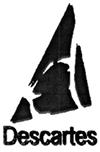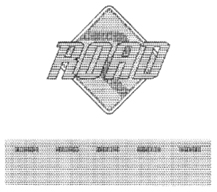Keltie Sim Luft, Constance Yoo
An application for the registration of a trademark must include a description of the specific products or services that will be associated with the mark. Moreover, under Canadian trademark law the description must be “in ordinary commercial terms” and sufficiently clear that competitors and consumers can easily understand what is included as part of the registration.
When computers first entered the marketplace, the terms “computer hardware” and “computer software” were considered to be sufficiently specific to define the products associated with a mark. While “computer hardware” is still considered to be an acceptable description, computer software has evolved considerably and there are now so many types and functions provided by software that more details are required when seeking a registration for a mark.
Acceptable description of computer software products
For a mark to be registered in connection with software today, the Trademarks Office requires that the function of the software be specified in the description of wares. The field of use (for example, medicine, education, etc.) may also be required if it is not obvious from the specified function of the software. Thus, the description now informs the reader what the software is used for and by whom it is used. The Office has provided a list of examples of acceptable descriptions of goods or “wares” wherein the field of use is obvious from the function of the software. Here are some of the examples:
| Acceptable Description | Field of Use |
| "software for use in cancer diagnosis" | medicine |
| "software for creating computer games" | entertainment |
| "computer programs for teaching typing skills" | education |
| "computer communications software to allow customers to access bank account information and transact business" | financial services |
In some situations, however, the field of use is not necessarily clear from a description of the function and an area or field of use must be specifically mentioned. Here are some examples:
| Acceptable Description | Field of Use |
| "education software featuring instruction in the French language" | education |
| "facilities management software, namely software to control building environmental, access and security systems" | facilities management |
| "factory automation software, namely software to integrate manufacturing machine operations, track problems and generate production reports" | factory automation |
Citation of old registrations for “computer software”
When the Trademarks Office began to require details regarding the specific function/nature of the software in connection with an application of a mark, applicants occasionally received responses from the Office refusing registration on the basis that the applied-for mark was confusing with an older mark registered for use in association with simply “computer software.” This still happens from time to time today. At face value, a mark associated with a product described simply as “computer software” encompasses the entire field of computer software even though the actual commercial product in connection to which the mark is used likely has a specific function for use in a specific field. Normally, only the description of the goods and/or services in a trademark application is considered in determining whether two marks are confusing. Thus, the all-encompassing term “computer software” has raised the issue of confusion for newer, similar marks for specific software applications.
Recognizing the obvious disadvantage to applicants attempting to register a new mark in such cases, examiners in the Trademarks Office have permitted applicants to submit evidence showing the actual activities of the owner of the older mark, although this practice has not been consistently applied. In addition, the Trademarks Opposition Board has carved out an exception for determining confusion in the case of wares involving computer software. For example, in a 2002 case involving Unisys Corp. and Northwood Technologies Inc., the Opposition Board held that a statement of wares listed broadly as “computer software” must be read with a view to determining the specific nature of the computer software at issue (for example, by looking at marketplace activities). In other words, despite a broad description, the Trademarks Office will interpret the particular type of software for older marks based on evidence showing the actual software that is being sold by the owner of that older mark.
Examples of citations/co-existence of similar trademarks for different software
Given the proliferation of computer software over the last decades, it is not surprising that the Trademarks Office has seen a number of similar marks for computer software, often raising the issue of confusion. As mentioned above, the purpose of the software may be sufficient to distinguish one software product from another, thus avoiding confusion since the products would be sold through different channels of trade and for use in different fields.
The following chart provides some examples of similar marks registered in connection with computer software applications for different purposes that have been allowed to co-exist.
| Trademark 1 | Trademark 2 |
| COMPULIFE | COMPUOFFICE |
| OPTIME | INTIME |
| DECARTA | 1) DESCARTES |
| VERTICAL MAPPER | 1) MAPPER 2) ER MAPPER |
| THE I.C. AXON EVALUATOR | AXON |
| @ ROAD | 1) ROADHOUSE |
Conclusion
Describing the goods or services associated with a trademark is a balancing act. Today, there are now so many different types of software applications that it has become necessary for descriptions to be quite specific in order to obtain a registration for a mark. In practice, a balance must be struck between providing a sufficient amount of detail in the application that the Office allows a mark to be registered in connection with a software application while being sufficiently broad to prevent other similar marks from being registered in connection with software applications in a same or related field of use. This in itself presents a challenge for a brand owner. If described too narrowly, the brand owner may be unable to succeed in an infringement action against the use of a similar mark for specific software functions that are in a field of use that is related to the registered mark but that performs a function that is sufficiently different from what is covered by the registration. Finding the right balance is an ongoing challenge that is only likely to get greater as the number of software applications continues to increase.
The preceding is intended as a timely update on Canadian intellectual property and technology law. The content is informational only and does not constitute legal or professional advice. To obtain such advice, please communicate with our offices directly.


